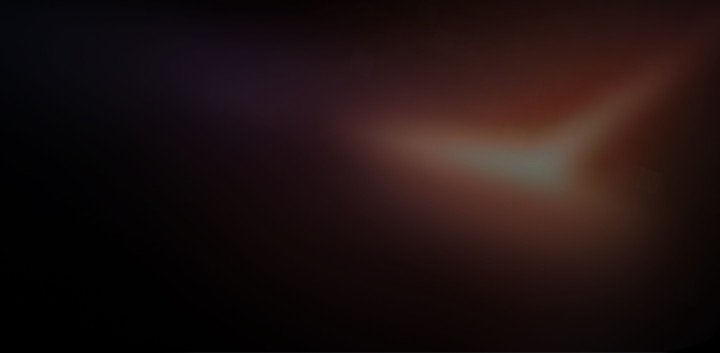Image Optimization Techniques for SEO: A Visual Performance Playbook for Architecture and Design Studios
In architecture and interior design, your visuals are the product. Your portfolio doesn’t exist without compelling images. But here’s the reality:
If your images aren’t optimised for SEO, they’re not discoverable.
If they’re not discoverable, they’re not driving business.
Most architecture firms and design studios treat image optimisation as a technical afterthought. But in the current search landscape, image performance is SEO performance.
This is your in-depth guide to image optimisation—not from a generic SEO lens, but through the high-stakes lens of visual-first, performance-driven design marketing.
Why Image Optimisation Is Mission-Critical for SEO
Let’s be clear: Google can’t “see” your images. It reads what’s around them—how they’re named, compressed, and structured.
For image-rich industries like design and architecture, poor image SEO leads to:
- Bloated load speeds → lower rankings
- Missed opportunities in image search → less visibility
- Low accessibility compliance → poor user experience
- Minimal content indexing → reduced page authority
On the flip side, optimised images help you:
– Rank on Google Images and visual search
– Show up in rich snippets, featured galleries, and location-based design queries
– Improve site speed and mobile experience
– Reinforce SEO context around your services and projects
– Convert more visitors into leads with frictionless, immersive visual UX

Core Image Optimization Techniques for SEO
Let’s break down the key principles and actionable best practices.
1. Compressing Images for Web Architects
Large image files kill load speed—and Google penalizes slow sites. Your goal is max quality at minimum weight.
Choose the Right File Format
| Format | Use Case |
| WebP | Best all-around for performance and quality |
| JPEG | Photos with complex details (fallback for WebP) |
| PNG | Transparent backgrounds or linework |
| SVG | Logos, icons, vector illustrations |
| AVIF | Newer format; higher compression than WebP (browser support still growing) |
Optimise Without Losing Visual Integrity
Use compression tools like:
- TinyPNG (also supports WebP)
- ImageOptim (desktop, lossless)
- ShortPixel (bulk + WordPress plugin)
Target: 100–150 KB per image, under 1MB max
For hero banners: up to 300–400 KB if absolutely necessary
Leverage Lazy Loading
Lazy loading defers image load until the user scrolls to it.
- Add loading=”lazy” to
<img>tags - For example:
<img src="villa-front-exterior.webp" loading="lazy" alt="..." />
2. Responsive Images: Design for Every Screen
Google is mobile-first. Your images must adapt to screen size.
Use the <picture> and srcset Elements
<picture>
<source srcset="villa-1024.webp" media="(min-width: 1024px)">
<source srcset="villa-768.webp" media="(min-width: 768px)">
<img src="villa-480.webp" alt="Contemporary hillside villa with wooden cladding" loading="lazy">
</picture>
This tells browsers which image version to load based on screen width—keeping load light and UX sharp.
Use CDN Delivery for Global Performance
Content Delivery Networks (CDNs) like Cloudflare or BunnyCDN reduce latency by serving images from nearby servers. Especially useful for international clients.
3. Strategic Use of Alt Text and Title Tags for Images
Google reads alt text to understand image context. This supports SEO, accessibility, and image search.
Alt Text Best Practices
✅ Describe the image clearly and concisely
✅ Include location + service keywords where relevant
✅ Avoid keyword stuffing
✅ Keep under 125 characters
Bad: IMG20394
Good: Modern kitchen design with marble island in South Delhi apartment
Title Tags (Optional but Useful)
The title attribute gives extra context on hover and may provide minor SEO value:
<img src="kitchen.jpg" alt="Minimalist kitchen design in Delhi" title="Contemporary kitchen with open layout and soft lighting" />
4. File Naming That Reinforces SEO
Image filenames are indexed by Google and used in image search.
Rename your files BEFORE upload:
✅ mumbai-modern-residence-interior.jpg
❌ DSC_8493.jpg
Use lowercase, hyphenated words (no underscores or spaces). Avoid generic labels like “project1.jpg.”
5. Implementing Image Sitemaps for Portfolios
Google doesn’t always find image assets unless you guide it. Image sitemaps are the fix.
What is an Image Sitemap?
An XML sitemap that lists your images and provides metadata, improving visibility in Google Images.
<url>
<loc>https://yoursite.com/portfolio/villa-goa</loc>
<image:image>
<image:loc>https://yoursite.com/images/goa-villa-poolside.jpg</image:loc>
<image:title>Seaside villa with infinity pool in Goa</image:title>
<image:caption>Featured in Architectural Digest 2024</image:caption>
</image:image>
</url>
How to Generate One
- Use SEO plugins (Rank Math, Yoast)
- Use image sitemap generators like Screaming Frog or Image Sitemap Generator
- Submit through Google Search Console
6. Integrating Schema Markup for Visual Discovery
Structured data helps Google understand the role and relevance of images.
Use schemas like:
ImageObjectCreativeWorkProjectBreadcrumbList
Example for an image:
{ "@context": "https://schema.org", "@type": "ImageObject", "contentUrl": "https://yoursite.com/images/terrace-redesign-delhi.webp", "creator": { "@type": "Organization", "name": "Studio Vantage" }, "license": "https://yoursite.com/license", "acquireLicensePage": "https://yoursite.com/contact"}This boosts eligibility for image rich results, visual carousels, and visual AI queries.
Common Mistakes to Avoid in Image SEO
| Mistake | Correction |
| Uploading uncompressed 5MB photos | Use WebP at 80% quality, target under 150 KB |
| Using filenames like IMG_0393.jpg | Rename with context-rich keywords |
| Leaving alt text blank | Write concise, keyword-integrated alt tags |
| Not serving responsive images | Use srcset and <picture> elements |
| Forgetting to include image schema | Add ImageObject in JSON-LD format |
| Ignoring loading speed on mobile | Audit with PageSpeed, reduce LCP |
Image Optimisation Techniques for SEO
What’s the best format for image-heavy design sites?
WebP is the best all-rounder for speed and quality. Use JPEG as a fallback for older browsers, and AVIF for ultra-compression (with browser support caution).
Do I need to include both alt text and title tags?
Alt text is required for SEO and accessibility. Title tags are optional but help with UX and added context. Use them where helpful, not as a replacement.
How many images should I include per portfolio page?
Enough to tell the story—typically 6–12 per project. But each should serve SEO and engagement, not clutter. Quality > quantity.
Will image SEO help my rankings?
Absolutely. Images impact:
- Page speed (a ranking factor)
- Engagement (bounce rate, time on page)
- Image search traffic
- Rich snippet eligibility
What tools can I use to audit image performance?
- Google PageSpeed Insights
- Screaming Frog (image SEO crawl)
- GTMetrix (waterfall image load)
- ImageKit (optimization + CDN)
Design is Visual—But Search is Textual
Don’t assume that because your work looks great, it performs online.
The studios winning in SEO understand that every image is an SEO asset—a doorway to visibility, brand recognition, and conversion.
Image SEO is not just technical hygiene. It’s strategic visibility work. Treat it with the same precision you treat your drawings, elevations, or renders.
Image SEO Built for Visual-First Design Brands
At Adswom, we specialise in image optimisation for design studios. Through our Search-to-SQL Framework, we:
- Optimize image delivery for performance and rankings
- Build schema-rich, indexable project pages
- Design visual-first SEO strategies that convert
- Track image search traffic and conversions via GA4 + CRM
- Elevate portfolios into lead-generating assets
If your site is visual but invisible to Google, we’ll fix that.
👉 Book a Strategy Call with Adswom and let’s transform your design visuals into organic business growth.
Writing team:

Les't communicate.
Recent Articles
 The Real Cost of Generic SEO for High-End Architecture and Interior Design Studios
The Real Cost of Generic SEO for High-End Architecture and Interior Design Studios
 Why Generalist SEO Fails Designers — And What to Do Instead
Why Generalist SEO Fails Designers — And What to Do Instead
 What to Look for in an SEO Agency: A Strategic Guide for Architects and Design Firms
What to Look for in an SEO Agency: A Strategic Guide for Architects and Design Firms

